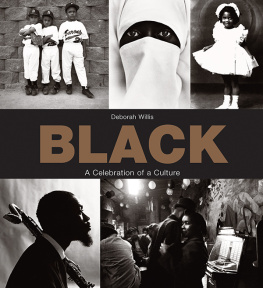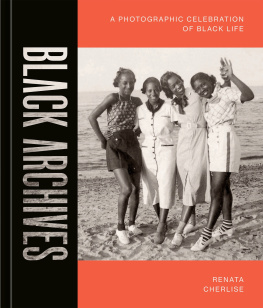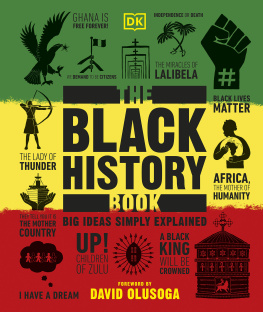Copyright 2004 Hylas Publishing First Skyhorse Publishing Edition 2014 All rights to any and all materials in copyright owned by the publisher are strictly reserved by the publisher. All Rights Reserved. No part of this book may be reproduced in any manner without the express written consent of the publisher, except in the case of brief excerpts in critical reviews or articles. All inquiries should be addressed to Skyhorse Publishing, 307 West 36th Street, 11th Floor, New York, NY 10018. Skyhorse Publishing books may be purchased in bulk at special discounts for sales promotion, corporate gifts, fund-raising, or educational purposes. Special editions can also be created to specifications.
For details, contact the Special Sales Department, Skyhorse Publishing, 307 West 36th Street, 11th Floor, New York, NY 10018 or . www.skyhorsepublishing.com Cover design by Gus Woo Cover photo credit Anna Maria Horsford, Charles (Chuck) Stewart, Bruce Davidson, Wendy Philips, Chester Higgins, Jr. Library of Congress Cataloging-in-Publication Data is available on file. Print ISBN: 978-1-62914-387-3 Ebook ISBN: 978-1-62914-874-8 Printed in China FOREWORD  Chester Higgins Jr., On the Set of Soul , ca. 1972, All rights reserved, Ellis Haizlip Collection, Archive Center, Anacostia Museum and Center for African American History and Culture, Smithsonian Institution Photographs tell compelling stories. Yes, I remember there was a time before the civil rights movement, the war on poverty and affirmative action.
Chester Higgins Jr., On the Set of Soul , ca. 1972, All rights reserved, Ellis Haizlip Collection, Archive Center, Anacostia Museum and Center for African American History and Culture, Smithsonian Institution Photographs tell compelling stories. Yes, I remember there was a time before the civil rights movement, the war on poverty and affirmative action.
A time when every black neighborhood was not referred to as a ghetto. When discrimination was the expected... it was clear that both Northern and Southern black people and even the new immigrants from the West Indies and South America knew Their Place. The area around Lenox Avenue and One Hundred and Twenty-Second streets was one of those places. I was born in the hospital commonly known as Flowers Fifth Ave and brought back to my fathers brownstone. (Back then it was called a rooming house).
My father had two small grocery stores. Next to one of the stores five other black-owned shops existed. The florist, the cleaners, the Laundromat, the funeral parlor, andacross the streeta Photo Studio. The Studio, GGG Photo Studio, was where James VanDerZee, artist and photographer, exhibited photographs of men and women in the window. I remember the treasured photograph of my father made by his friend and neighbor. Black folks created incredible distractions from the larger white world who didnt want us to intrude their world.
The black folks I knew wanted to insure our soul comfort. My dear mothers goal was to make me a lady. What followed were many failed attempts of dance classes in interpretive, ballet and tap. Singing lessons, piano lessons and once-a-week trips to my godmothers house to learn how to eat with a knife and fork, putting the pinky finger up, and blowing your soup before eating. My mother was born and raised in Santa Domingo in extremely poor conditions and it appears that she wanted her new life in America documented. She made her children dress up once a year to go to the Photographers Studio on 125th Street.
At least twenty-five copies of each of our photos had to be sent to every island where we had cousins and grandmothers and friends. Because my father was a business owner we had to participate in the Tom Thumb Weddings and the yearly fashion shows held at the Renaissance Ballroom, as well as bus outings at Bear Mountain or the Fathers Day Boat Outing. I dont know if there is another nationality that sponsored cocktail sips and the church school recitals where if you could recite James Weldon Johnsons The Creation with hand movements, you were guaranteed a standing ovation. This experiencethe uniqueness of the black experienceis revealed in Deborah Williss Black: A Celebration of a Culture . In the 1970s, I had the good fortune of working on SOUL. This was a production of WNET/13, the educational television station out of New York City and broadcasted on the national feed to all the PBS stations after the first year.
Producer Ellis B. Haizlip developed it after the 1968 riots. The riots clearly pointed out the many wrongs in American society and SOUL was designed to expose both black and white television viewers to the richness of our cultural history. SOUL was the first and the largest audience many of these black artists had. This book reflects my own past. It visualizes my memory of family stories and moments such as when Alvin Aileys Dance Theatre had their first hour-long special on SOUL; the debut of George Faison Universal Dance Theatres ballets Slave Ship and Suite OTIS (a tribute to Otis Reddings music); Nikki Giovanni reading her poetry accompanied by a fifty-voice gospel choir; Toni Morrison reading from her first novel; musician Rashaan Roland Kirk stunning the studio audience as well as the millions who witnessed him play five saxophones at the same time.
Ellis spoke to so many people who changed history but were kept silent by the mass media; asking questions that no one would even think of asking to Muhammad Ali, Minister Louis Farrakhan, and Mrs. Betty Shabazz. Ruby Dee and Ossie Davis did an hour of selected poetry, and the Last Poets, Thelonious Monk, Carmen McRae, Esther Phillips, Little Jimmy Scott, and Nick Ashford and Valerie Simpson gave us reason to celebrate their brilliance and feel a lot better about ourselves. Today, I am an actress but I also consider myself an archivist of this rich culture, especially through memory and photography. I feel an overwhelming responsibility to infuse the respect I have for this history I witnessed in every character I portray. Black: A Celebration of a Culture bears witness to all of these characters and events.
Enjoy this collection and be renewed. This is an extraordinary wonderment of our colored selves. Each photograph in this book offers us new and revised insights of black culture. Anna Maria Horsford INTRODUCTION It is gloriousthis history of ours! It is a great storythat of the Negro in America! It begins way before America was America or the U.S.A. It covers a wide span, our story. Let me tell it to you...
Langston Hughes This book is one storyour storytold through photographic imagery. I find Langston Hughess words an inspirational way in which to introduce this book about interpreting black culture through photography. Most people construct their experience of life by visualizing the moment through storytelling, film and/or televisionand the photographic image. For me, the photograph is an instrument of memory that explores the value of self and family in documenting everyday life. As a photographer, educator and curator, I have used photography to tell stories about everyday life and in the past asked students and artists to use the photograph in a narrative form to explore personal memories. Photographers are my storytellers, and photography is a participatory activity for both the subject and the photographer.
When I became aware of the photograph as an important storytelling device, I was a little black girl with bangs and pigtails living in North Philadelphia. My father was the family photographer and his cousin owned a studio near our house. They often photographed us, and later I spent many hours placing photographs in the family album. This was in the 1950s and early 60s when the small number of television shows with black characters did not portray what I experienced in my own family. In one of Hughes essays about the fictional character Jesse B. Simple he relates a tale that reveals Simples consciousness of the lack of representation of identifiable black images on radio and television.













 Chester Higgins Jr., On the Set of Soul , ca. 1972, All rights reserved, Ellis Haizlip Collection, Archive Center, Anacostia Museum and Center for African American History and Culture, Smithsonian Institution Photographs tell compelling stories. Yes, I remember there was a time before the civil rights movement, the war on poverty and affirmative action.
Chester Higgins Jr., On the Set of Soul , ca. 1972, All rights reserved, Ellis Haizlip Collection, Archive Center, Anacostia Museum and Center for African American History and Culture, Smithsonian Institution Photographs tell compelling stories. Yes, I remember there was a time before the civil rights movement, the war on poverty and affirmative action.